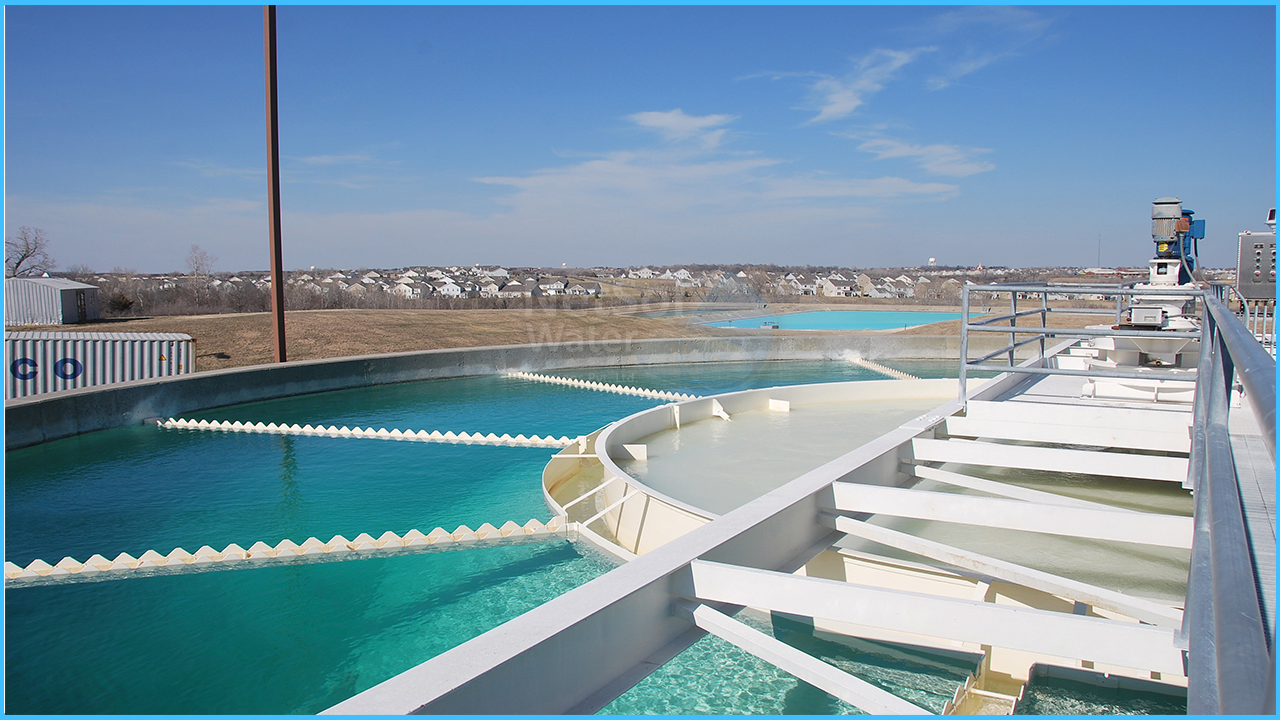Reverse osmosis (RO) is a filtration technology for water purification that removes dissolved impurities using a tightly coiled, semi-permeable membrane. Pressure applied before the membrane causes the fluid to flow from a zone of high solute concentration to a region of low solute concentration, overcoming natural osmotic pressure and redirecting dissolved impurities, resulting in fine filtration of water or any solution. Similar to a paper towel roll, the membrane is made up of numerous layers of wound material. The water flows from the membrane's outer layers to its interior layers.While the pure water travels through the layers into the Centre permeate rube, the contaminated water is pushed and exits the membrane on the opposing side of the incoming water. As the fluid spirals through the numerous tightly wrapped layers of the membrane and into the inner permeate tube, the micro-contaminants are separated and removed, and the purified water is collected for use.RO (Reverse Osmosis) is a water purification technology that is utilized in a variety of industrial settings.
APPLICATIONS OF REVERSE OSMOSIS IN INDUSTRY SECTOR
The following are some industrial applications for reverse osmosis (RO)systems.
1. Purification of Municipal Water: Municipal water is used for both home and commercial purposes. In industry, the requirement for high-quality water extends far beyond cooking and washing. The food and beverage business pursues quality control so that a soda's or recipe's flavor remains constant no matter where it is consumed.
2. Seawater Desalination: This high salinity water is also used in marine industrial applications, off-shore drilling, maritime transit, and cruise ships. It aids in desalination as well as chemical and bacterial contamination reduction.
3. Boiler Feed Water: Hard water is a problem for industrial boilers. Scaling, thermal transfer defects, greater downtime for cleaning, and a shorter boiler vessel life cycle are all concerns caused by using hard water at high temperatures. Industries such as mechanical, chemical, pharmaceutical, and lumber/pulp use reverse osmosis systems for pre-boiling water treatment/conditioning to attain this purpose.
4. Wastewater Treatment: One of the water purification procedures used in the water treatment industry is reverse osmosis. Chemical, bacterial, and dissolved contaminants are frequently removed using reverse osmosis as the final step.
5. Spot-free Rinse: Salt-free water is frequently required in industrial manufacturing, equipment cleaning, and even commercial applications such as car washing, surface rinsing, and so on. Due to the presence of chemicals or magnesium and calcium salts in hard water, it causes scaling, hard surface patches, and even surface bleaching. To avoid equipment damage, the rinse water is filtered using reverse osmosis devices.
HOW RO SYSTEM IMPROVES THE WATER QUALITY FOR INDUSTRIAL USE
- 1. CONTAMINANTS REMOVED
By applying pressure to transport water through a membrane, RO system can dissolve pollutants from water in both commercial and industrial settings. RO is far more effective in removing particles than other filtration processes. The RO water plant is meant to recycle wastewater from the automotive, food, and beverage industries, as well as groundwater and landfill leachate processes.The technology contributes significantly to the reduction of DI water use and the generation of less wastewater. Furthermore, the trash generated can be reused at any point in the cycle. Without the use of expensive chemicals, RO filtration removes more microorganisms.
- 2. WATER OF EXCELLENT GRADE
If the membranes are effective and of good quality, a commercial RO plant can improve the quality of your industrial water by filtering pollutants. It's a powerful plant that can remove fluoride, lead, chlorine, dissolved salts, and other toxins with an efficiency of 85 to 98 percent. The water treatment eliminates pollutants by forcing water molecules across a membrane under pressure.The water produced once the procedure is completed is cleansed and turned into a tasty, drinkable liquid. Sediment, carbon, reverse osmosis membrane, and polishing filter are the four steps of the process in general.
- 3. COST-EFFECTIVE
The RO water plant, on the other hand, necessitates frequent membrane replacement, which is costly in the long run. However, if the system is utilized in conjunction with pre-treatment and excellent maintenance habits, it can help to prevent system failure and reduce future maintenance costs. When compared to prior outmoded membranes, advancements in technology have had a considerable impact on making the system cost-effective.Today's membrane designs come in a variety of shapes and sizes. The spiral wound is the best design form because it is both cost-effective and space-efficient, allowing for more membrane to be packed into a smaller space. As a result of the membrane design, you will notice a significant change in the performance of the water you can acquire from a RO water plant.
- 4. REVERSE OSMOSIS PLANTS LAST LONGER
When properly maintained, the RO system is simple to operate and has low upkeep costs. Maintaining your water plant can be done in a variety of ways. Depending on the sorts of water quality you require, the membrane should be updated every six months to two years.All domestic RO systems run on water pressure and do not require energy. If you have a larger commercial system, however, you may need to use electric pumps to meet your needs.




